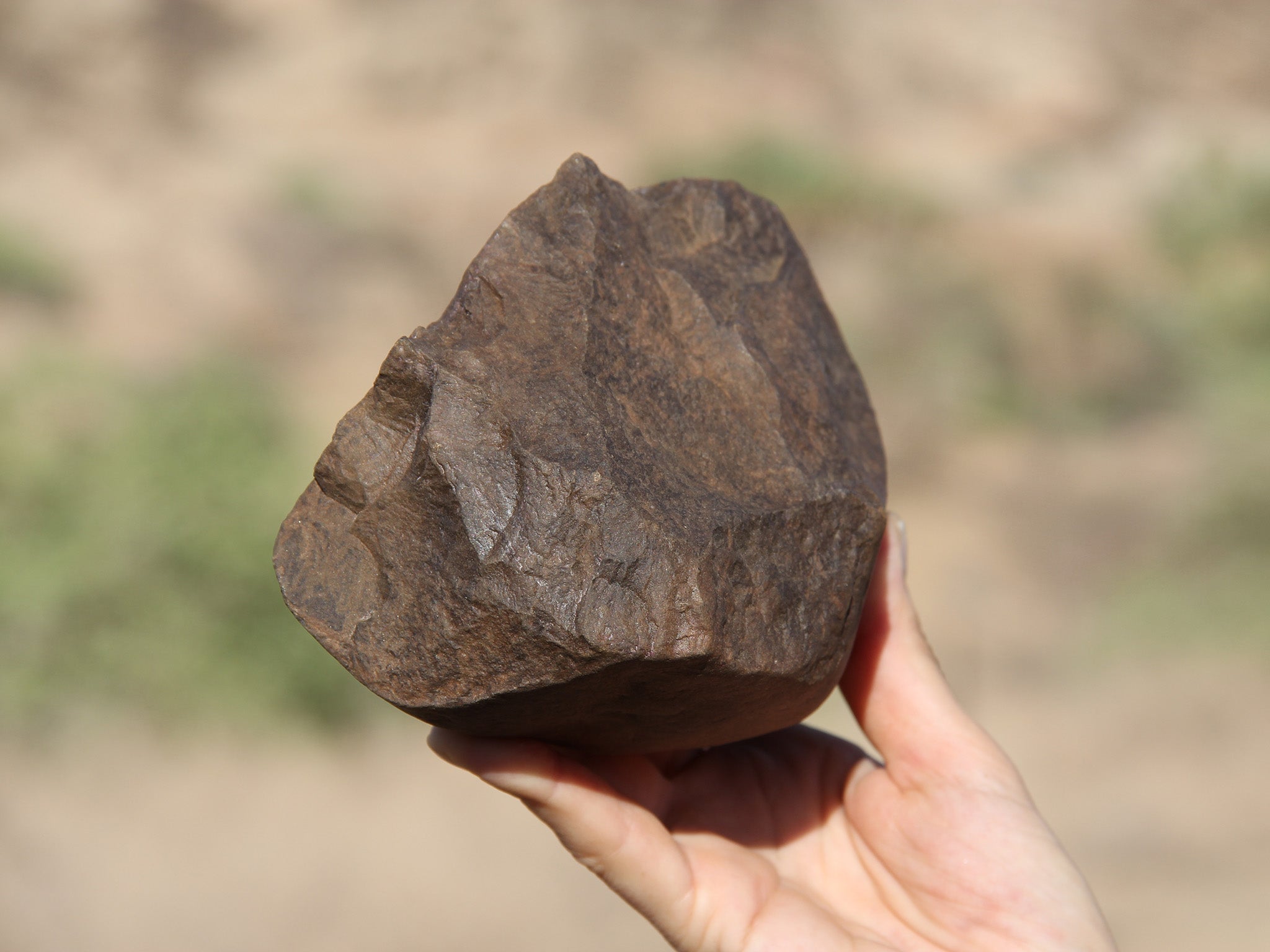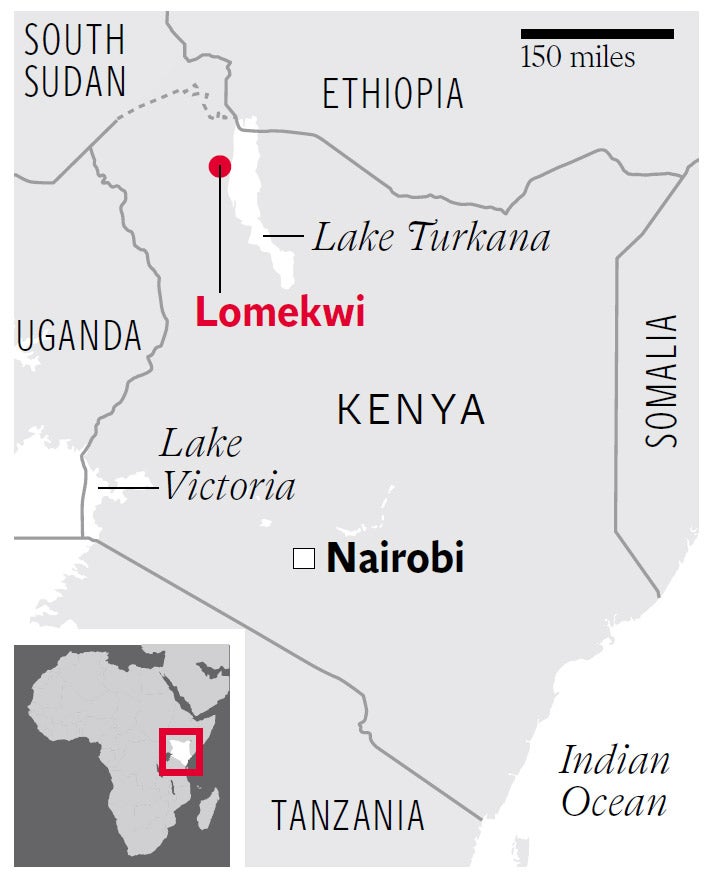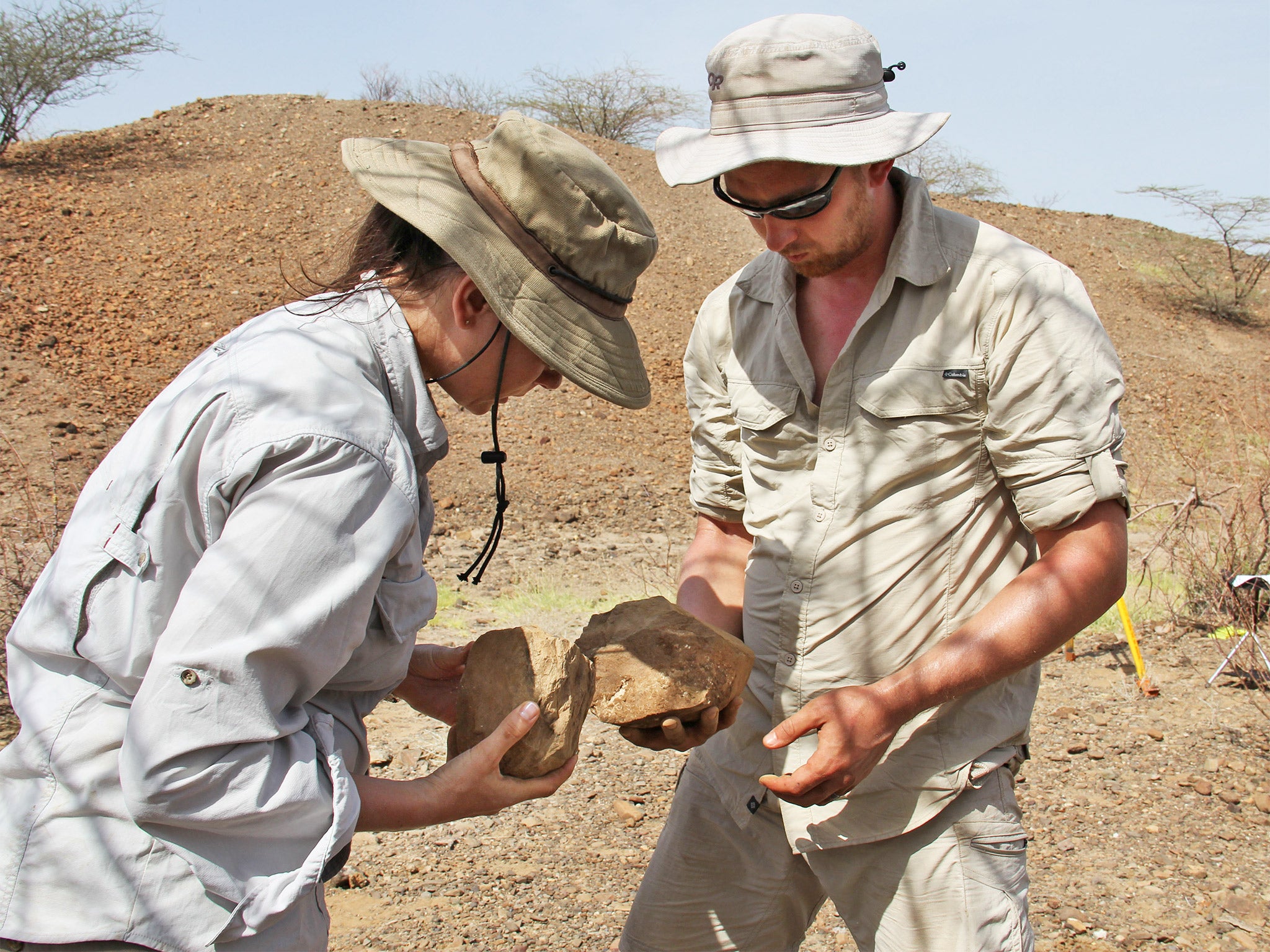'New beginning to the known archaeological record' as oldest stone tools ever discovered found in Kenya
The implements, dating back 3.3m years, predate the earliest known members of the Homo genus by about half a million years

Your support helps us to tell the story
From reproductive rights to climate change to Big Tech, The Independent is on the ground when the story is developing. Whether it's investigating the financials of Elon Musk's pro-Trump PAC or producing our latest documentary, 'The A Word', which shines a light on the American women fighting for reproductive rights, we know how important it is to parse out the facts from the messaging.
At such a critical moment in US history, we need reporters on the ground. Your donation allows us to keep sending journalists to speak to both sides of the story.
The Independent is trusted by Americans across the entire political spectrum. And unlike many other quality news outlets, we choose not to lock Americans out of our reporting and analysis with paywalls. We believe quality journalism should be available to everyone, paid for by those who can afford it.
Your support makes all the difference.The oldest stone tools have been discovered by archaeologists in Kenya who say they are 3.3m years old – about 700,000 years older than the previous most ancient stone implements.
More than 100 primitive hammers, anvils and other stone artefacts have been unearthed in the desert hills bordering the western shores of Lake Turkana in the Kenyan Rift Valley in a discovery that the researchers claim “marks a new beginning to the known archaeological record”.
The discovery undermines the argument that making stone tools was a defining characteristic of the direct human lineage leading to the emergence of Homo sapiens because it required a unique combination of manual dexterity and cognitive ability.
The stone tools predate the earliest known members of the Homo genus by about half a million years, suggesting that the implements were made by another species of “hominin” – the non-ape human tribe – which may or may not have been one of our direct ancestors, scientists said.

Scientists do not yet know which species made the stone tools but they suggest that a possible candidate is a “flat-faced”, ape-like hominin called Kenyanthropus platyops which was known to have lived in the same place at the same time. But they accept that the toolmaker could also have been another, as-yet undiscovered hominin species.
“This is a momentous and well-researched discovery. I have seen some of these artefacts in the flesh, and I am convinced they were fashioned deliberately,” said Professor Bernard Wood of George Washington University, an expert on early human origins who was not involved in the discovery.
The origin of stone tool-making is seen as crucial to the understanding of human prehistory because ultimately it led to greater social cooperation in hunting and the later evolution of more sophisticated tools and weapons made of flint, wood and animal bone.

Although chimpanzees are known to use stone tools for various purposes, such as nut cracking, the deliberate creation of sharper edges by “knapping” one rock against another is seen as needing far greater dexterity, muscle control and cognitive ability, the scientists said.
Archaeologists discovered the stone artefacts in a previously unexplored area at a known fossil site on the shores of Lake Turkana, which they discovered by accident after taking a wrong turn in the desert one morning in July 2011.
hey went on to discover dozens of large stone tools and tool-making remnants that had been fashioned from nearby rock. A study of the site suggested it was covered in woodland 3.3m years ago, suggesting the tools could have been used for breaking open nuts or tubers, or bashing dead logs to get at the insects inside, the researchers said.
They have called the site Lomekwi 3and have suggested that the type of primate tool-making is known by the name “Lomekwian” to distinguish it from the “Oldowan” tools made 700,000 years later at the Olduvai Gorge in Tanzania.
“[They] shed light on an unexpected and previously unknown period of hominin behaviour and can tell us a lot about cognitive development in our ancestors that we can’t understand from fossils alone,” said Sonia Harmand of Stony Brook University in New York, and lead author of the study published in the journal Nature.
Richard Potts, director of Human Origins at the Smithsonian National Museum of Natural History, said: “Researchers have thought there must be some way of flaking stone that preceded the simplest tools known until now. Harmand’s team shows us just what this even simpler altering of rocks looked like before technology became a fundamental part of early human behaviour.”
The oldest Oldowan tools were thought to have been made by an early member of the Homo genus, a species called Homo habilis or “handy man” which lived between 2.1m and 1.5m years ago.
However, earlier this year scientists announced that they had discovered another member of the Homo genus that had lived about 2.8m years ago in the Afar region of Ethiopia – pushing back the human lineage by half a million years but still not far enough back to account for the stone tools at Lomekwi 3.
Join our commenting forum
Join thought-provoking conversations, follow other Independent readers and see their replies
Comments